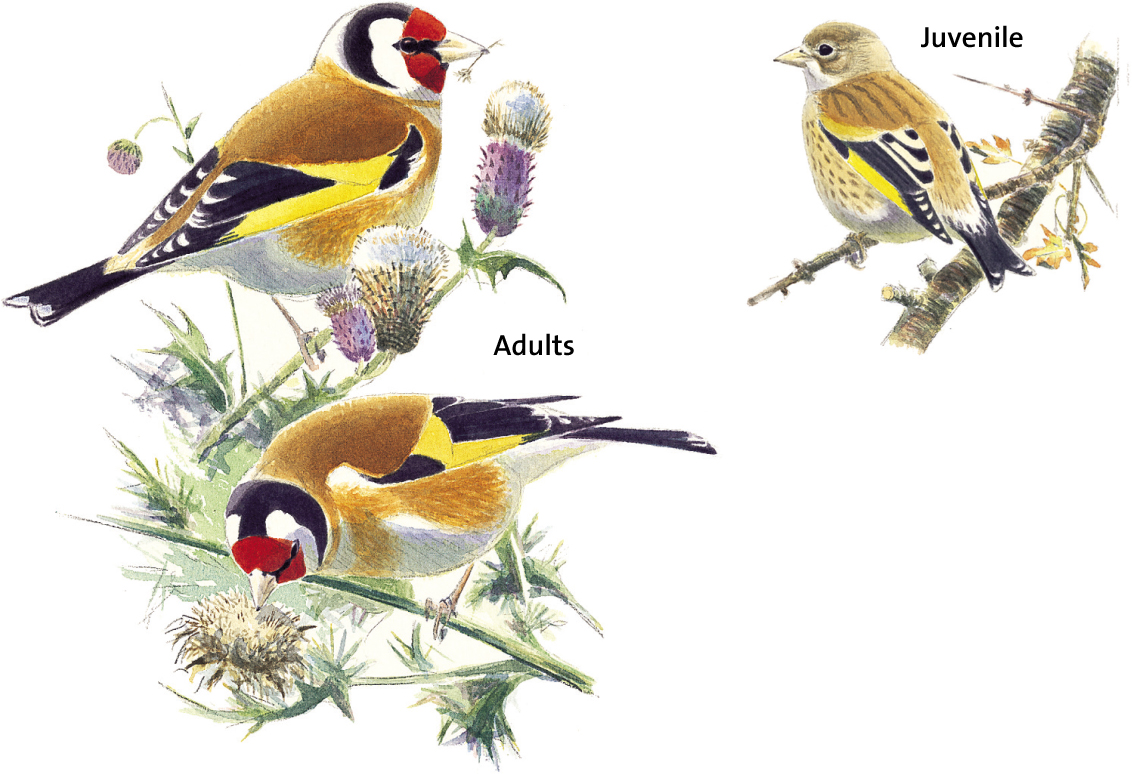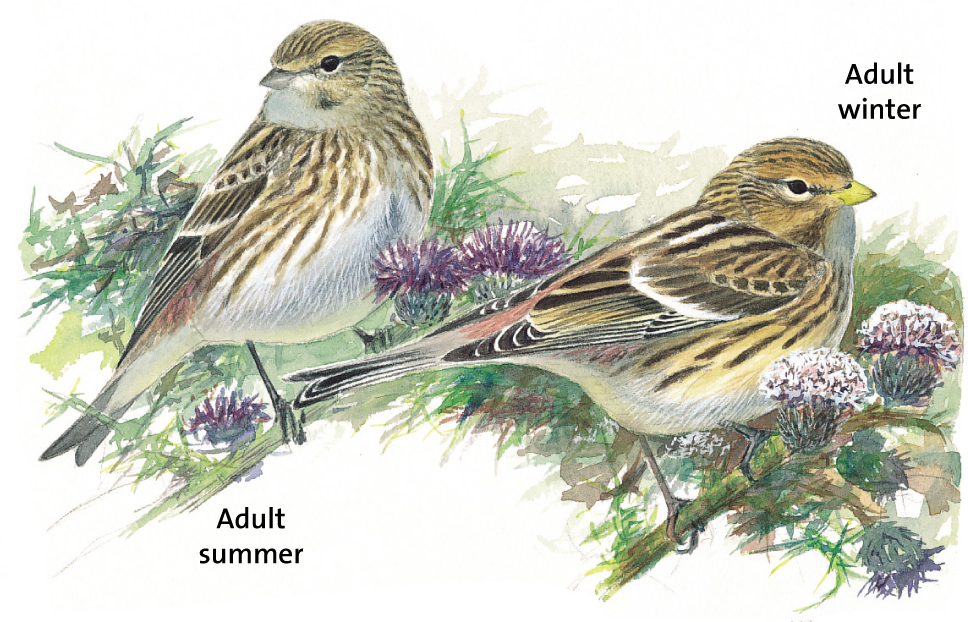
Goldfinch
Carduelis carduelis

SIZE AND DESCRIPTION
13cm. Red face, white cheeks and throat, black cap and black-and-gold wings. In flight wings show broad golden bands, and white rump and black tail are visible. Sexes alike, but juvenile has a brown-streaked head.
VOICE
Cheerful trisyllabic ‘tickelitt’ call. Song a series of rapid trills and twitters.
HABITAT
Resident in Britain. Open lowland woodland, heaths, orchards and gardens in most of Europe. Flocks often found around coastal fields and scrub in winter.
FOOD AND HABITS
Eats seeds and berries. Favours teasels and thistle heads. Nest made of hair and rootlets; positioned high in canopy.
Linnet
Carduelis cannabina

SIZE AND DESCRIPTION
13cm. Breeding male has a crimson forehead and breast, and a chestnut mantle. Winter male resembles female.
VOICE
Canary-like song is a pleasant twitter consisting of chirping and rolling sounds, sung from the top of a bush.
HABITAT
Resident in Britain. Open fields with bushes and waste ground. Farmland and coasts in winter. Widespread throughout most of Europe.
FOOD AND HABITS
Mostly eats seeds and arable weeds. Often breeds in loose colonies. Nest a grassy cup well hidden in a shrub. Common but declining due to changes in agricultural practices.
Twite
Carduelis flavirostris

SIZE AND DESCRIPTION
13cm. Small, rather drab brown, small-billed, streaky finch, similar to female Linnet. Male has variable pink patch on rump, and both sexes a marked cinnamon-brown flush on the face and upper breast. Grey bill becomes yellow in winter.
VOICE
Various rather harsh, nasal calls. Song a simple combination of call notes.
HABITAT
Breeds on coasts and uplands in northern Europe including northern Britain, moves south in winter. Prefers moorland edges, upland farmland and, in winter, coastal fields and partly vegetated upper slopes of beaches.
FOOD AND HABITS
Feeds on seeds, and in summer small invertebrates. Flocks in winter. Mainly feeds at ground level.